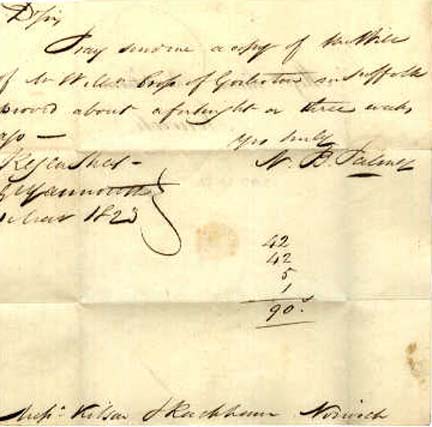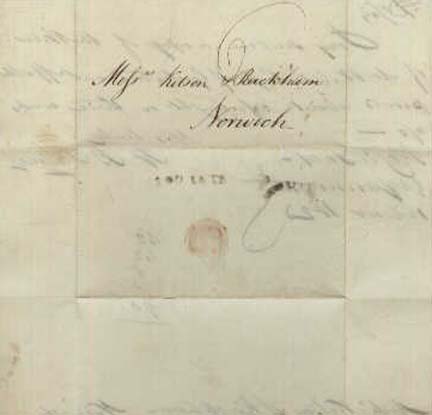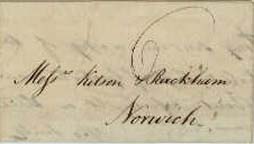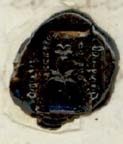These letters graciously have been shared with the Victorian Web by Eunice and Ron Shanahan; they have been taken from their website. The letters give an insight into the daily lives and concerns of 'ordinary' people without whom history would not exist. The letters are a wonderful example of how much history may be gleaned from such sources.
Before 1840 various factors affected the cost of posting a letter. They included the distance involved, the weight, whether there was anything enclosed, whether paid for on despatch or receipt, and whether it was a single or a double sheet. Because of this last factor, the letter was written, then the page was folded and the address inscribed on the outside of the same sheet. If another page had been enclosed the cost would have doubled. The postage was usually paid by the person who received the letter, not by the sender. There were three steps to writing and preparing a letter for posting.
Step 1. Take a blank piece of paper and write your message.

Dear Sir,
Pray send a copy of the will of Mr Willm. Cross, of Gorbiston in Suffolk, proved about a fortnight or three weeks ago.
Yrs Truly
N.B. Palmer
Regent Street
Gt Yarmouth
11 Nov 1823
Messrs Kitson & Backham, Norwich
Step 2. Fold the paper (I)
Fold the paper, keeping the message inside, so that the two ends will tuck into one another, and write the address on one of the outside panels:

Messrs Kitson & Backham / Norwich
Step 3: Fold the paper (II)
When the address has been written, tuck the ends of the letter into one another and it is then ready to be lodged at the local post office, or to be collected by the postman.


It may be necessary to make a better seal, in which case a stick of sealing wax is heated by the flame of a candle, and held over the join of the ends of the letter. When a melted blob has dropped onto the letter, press a seal onto it, and as soon as it cools, the letter is sealed. The sealing wax was usually red, but in this case it is black.
Writing Paper
Many of the letters in our collection are written on quite heavy paper, which when held up to a strong light shows a watermark. One of these watermarks is TURKEY MILL 1825 and this company is still producing paper.
3 December 2002